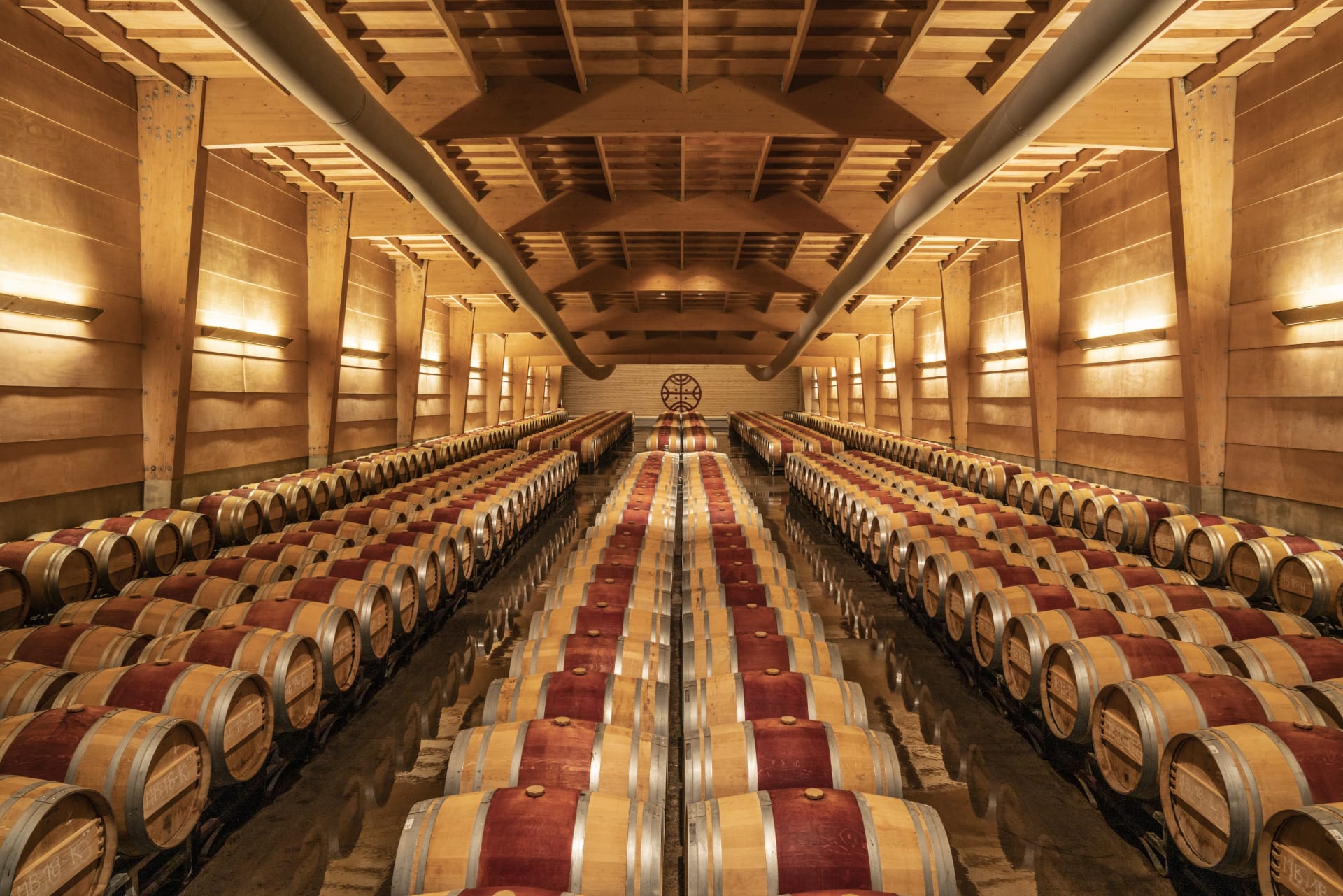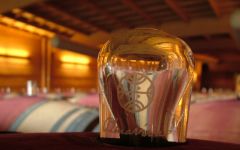Almaviva 1996
-
Robert
Parker -
James
Suckling


Product Details
Your Rating
Somm Note
Winemaker Notes
Blend: 75% Cabernet Sauvignon, 19% Carmenere, 6% Cabernet Franc
Professional Ratings
-
Robert Parker's Wine Advocate
The partnership of Philippine de Rothschild of Mouton-Rothschild and Concho y Toro produced this exquisite Cabernet Sauvignon-based wine (there is also Merlot and Cabernet Franc in the blend), which takes its name from a character in The Marriage of Figaro. With wine making assistance from Mouton's team of experts, this estate has produced a saturated ruby/purple-colored wine with elegant, complex notes of cassis, pain grille, cedar, and tobacco. Soft, rich, and multidimensional, this full-bodied wine possesses exquisite complexity and a layered texture with no hard edges. Drinkable already, it promises to improve for 7-8 years, and last for 12 or more. This wine is scheduled to be released in the United States on May 1. This wine may appear expensive vis a vis the run of the mill juice coming out of Chile, but in today's marketplace, this effort is sensibly priced. Serious wine tasters should give it a try.
-
James Suckling
This mature Almaviva shows aromas of sweet tobacco, plums and cedar that follow through to a medium to full body. Starting to dry a little now. Needs drinking, but very pleasant with lots of tertiary fruit character. Drink now. A blend of 75% cabernet sauvignon, 19% carmenere, 6% cabernet franc.
Other Vintages
2020-
Robert
Parker -
Wine
Spectator
-
James
Suckling -
Wine &
Spirits -
Robert
Parker
-
James
Suckling -
Robert
Parker -
Wilfred
Wong - Decanter
-
Tasting
Panel -
Wine &
Spirits -
Wine
Spectator
-
James
Suckling -
Wilfred
Wong - Decanter
-
Tasting
Panel -
Robert
Parker -
Wine
Enthusiast -
Wine
Spectator
-
James
Suckling -
Robert
Parker -
Wine
Spectator
-
James
Suckling -
Wilfred
Wong - Decanter
-
Wine
Spectator -
Robert
Parker
-
James
Suckling -
Robert
Parker -
Wine
Spectator
-
James
Suckling -
Robert
Parker -
Wine
Spectator
-
James
Suckling -
Robert
Parker -
Wine
Enthusiast -
Wine
Spectator
-
James
Suckling -
Wilfred
Wong -
Robert
Parker -
Wine
Enthusiast -
Wine
Spectator
-
James
Suckling -
Wine
Spectator -
Robert
Parker
-
Wine
Spectator
-
Wine
Spectator
-
Wine
Enthusiast -
Robert
Parker -
Wine
Spectator
-
Wine
Spectator -
Robert
Parker
-
Wine
Spectator -
Robert
Parker -
Wine &
Spirits -
James
Suckling
-
Wine
Spectator -
Robert
Parker
-
Robert
Parker -
Wine
Spectator -
Wine
Enthusiast
-
Wine
Spectator -
Robert
Parker
-
Wine
Enthusiast -
Wine
Spectator
-
Wine &
Spirits -
Wine
Spectator -
Wine
Enthusiast -
Robert
Parker
-
Robert
Parker -
Wine
Enthusiast







Almaviva is the name of both winery and wine born of the joint venture between Baron Philippe de Rothschild and Viña Concha y Toro. It is also that of Pierre de Beaumarchais' character, the "Count of Almaviva" in his Marriage of Figaro, a work Wolfgang Amadeus Mozart later turned into one of the most popular operas ever. The classical epithet, laid out in Pierre de Beaumarchais' fair hand, shares the label with insignia of pre-hispanic roots symbolizing a union of European and American cultures that at every level has created successive bonds over centuries that have evolved a unique identity. The recent synthesis of French tradition and American soil has delivered an exceptional wine embodying the best of both worlds, a Primer Orden that really shines.

One of the world’s most classic and popular styles of red wine, Bordeaux-inspired blends have spread from their homeland in France to nearly every corner of the New World. Typically based on either Cabernet Sauvignon or Merlot and supported by Cabernet Franc, Malbec and Petit Verdot, the best of these are densely hued, fragrant, full of fruit and boast a structure that begs for cellar time. Somm Secret—Blends from Bordeaux are generally earthier compared to those from the New World, which tend to be fruit-dominant.

Dramatic geographic and climatic changes from west to east make Chile an exciting frontier for wines of all styles. Chile’s entire western border is Pacific coastline, its center is composed of warm valleys and on its eastern border, are the soaring Andes Mountains.
Chile’s central valleys, sheltered by the costal ranges, and in some parts climbing the eastern slopes of the Andes, remain relatively warm and dry. The conditions are ideal for producing concentrated, full-bodied, aromatic reds rich in black and red fruits. The eponymous Aconcagua Valley—hot and dry—is home to intense red wines made from Cabernet Sauvignon, Syrah and Merlot.
The Maipo, Rapel, Curicó and Maule Valleys specialize in Cabernet and Bordeaux Blends as well as Carmenère, Chile’s unofficial signature grape.
Chilly breezes from the Antarctic Humboldt Current allow the coastal regions of Casablanca Valley and San Antonio Valley to focus on the cool climate loving varieties, Pinot Noir, Chardonnay and Sauvignon Blanc.
Chile’s Coquimbo region in the far north, containing the Elqui and Limari Valleys, historically focused solely on Pisco production. But here the minimal rainfall, intense sunlight and chilly ocean breezes allow success with Chardonnay and Pinot Noir. The up-and-coming southern regions of Bio Bio and Itata in the south make excellent Riesling, Chardonnay and Pinot Noir.
Spanish settlers, Juan Jufre and Diego Garcia de Cáceres, most likely brought Vitis vinifera (Europe’s wine producing vine species) to the Central Valley of Chile sometime in the 1550s. One fun fact about Chile is that its natural geographical borders have allowed it to avoid phylloxera and as a result, vines are often planted on their own rootstock rather than grafted.
